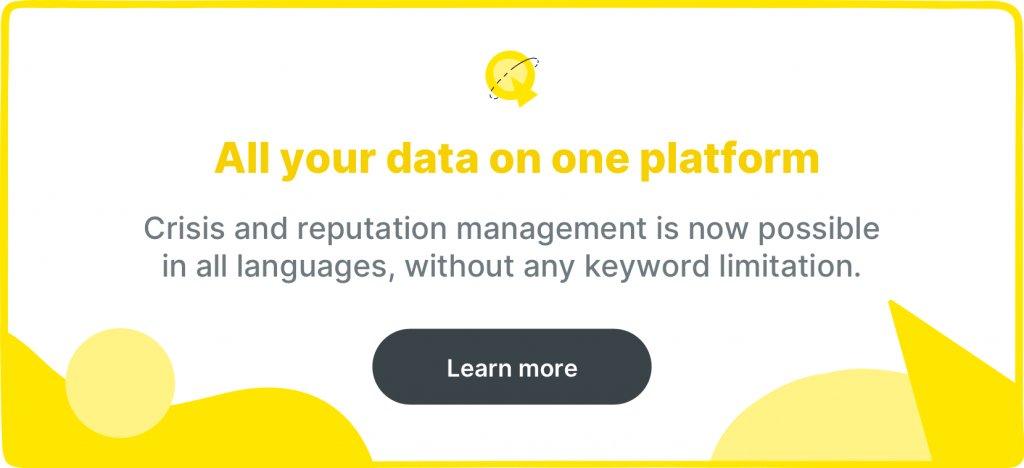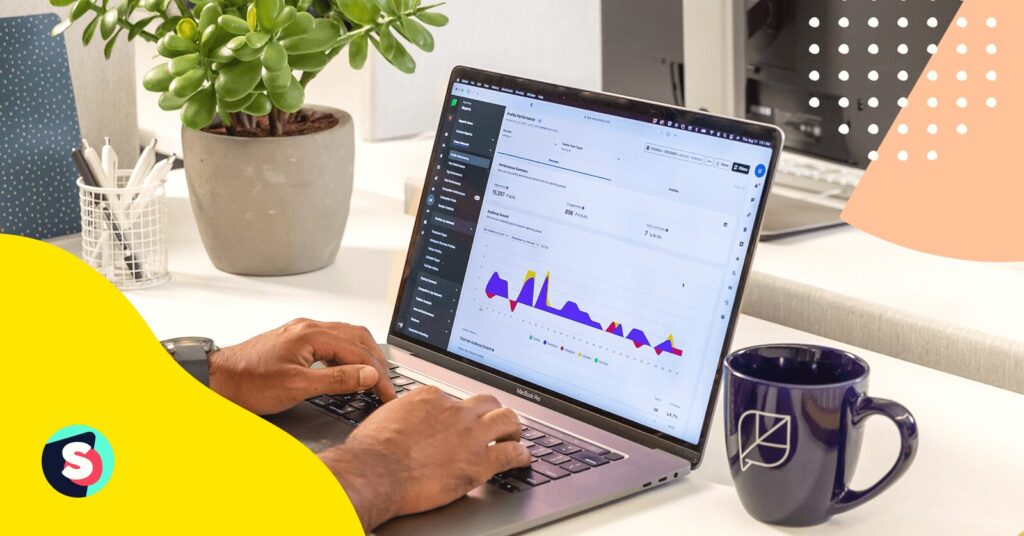The better you know who you’re talking to, the more effectively your message will land.
That’s a principle you’re likely applying to your social media strategy, fine-tuning it to your target audience to strike exactly the right chord.
According to McKinsey, 72% of high-performing marketers are focused on doing that, too.
But are you taking advantage of the full wealth of information available to you?
Are you drawing on the eye-opening insights nestled in people’s opinions about your brand across social media and the web, both when they tag you and when they don’t?
If you’re ready for an up-close view of the thoughts running through your audience’s minds and a real-time picture of your brand health, social listening is the solution you’re after.
Read on to discover more.
What is social listening?
Social listening is when you track different platforms, paying attention to topics that are related to your brand. You may also look for posts and comments that relate to your competitors and other players in your space, as well as the industry at large.
You then go on to uncover the sentiment behind these comments, typically breaking it down into positive, negative, and neutral.
That analysis part is what separates social listening from monitoring.
With both, you pay attention to the same factors, including:
- Brand mentions
- Uses of relevant keywords and hashtags
- Industry news and trends
- Competitor mentions
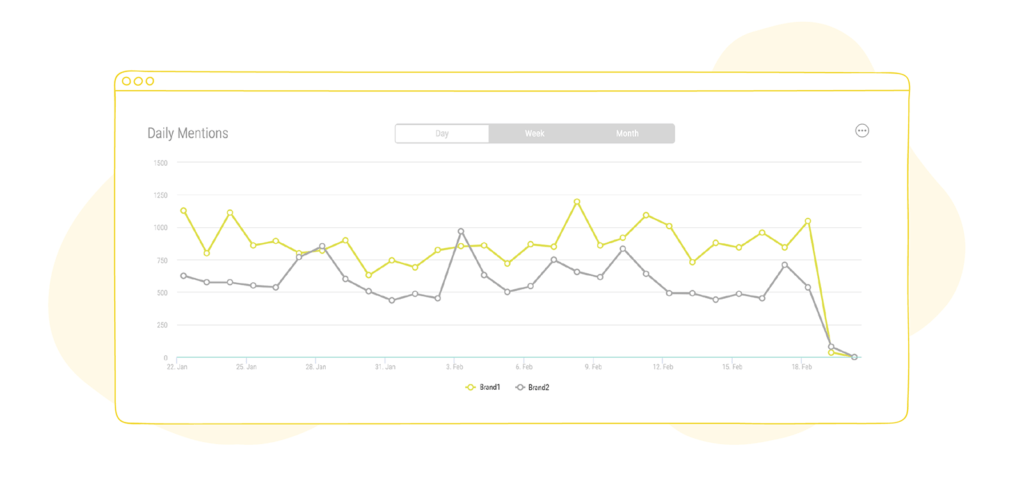
But social listening goes a crucial step further to discover the thoughts and feelings behind all these metrics, so you can understand the emotional drive behind your audience’s opinions.
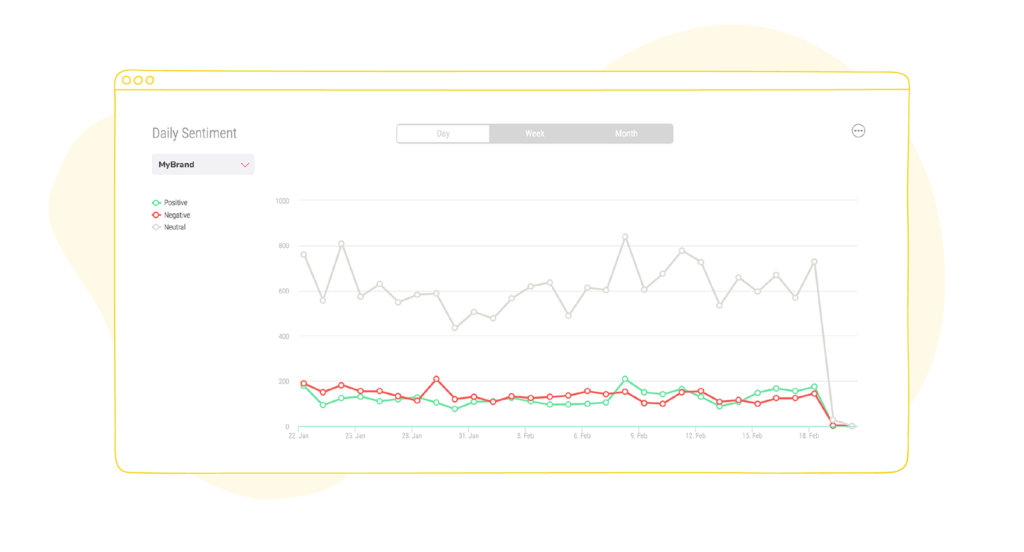
How does social listening work?
Apart from simply your mentions, social listening involves gathering posts, comments, and conversations that contain keywords or topics that are meaningful for your brand.
There’s no need to do this platform by platform or scour through the internet one page at a time. The Sociality.io listening module presents this information on one centralized dashboard, pulled from all your social media platforms and other places on the web.
Yes, phew indeed!
You can get social listening data from these sources:
- YouTube
- Blogs
- News
- The wider web
Filtering data
But not all the information you receive will be useful for your goals or the social media strategy you’re implementing at the moment. You may also want to look at different data points at different times, perhaps to make a comparison.
That’s why there are various filters to whittle the social listening information that surfaces into what matters most for your purposes.
You can filter it according to:
- Source types
- Process (sentiment, category, attribution)
- Time frame
- Media visibility
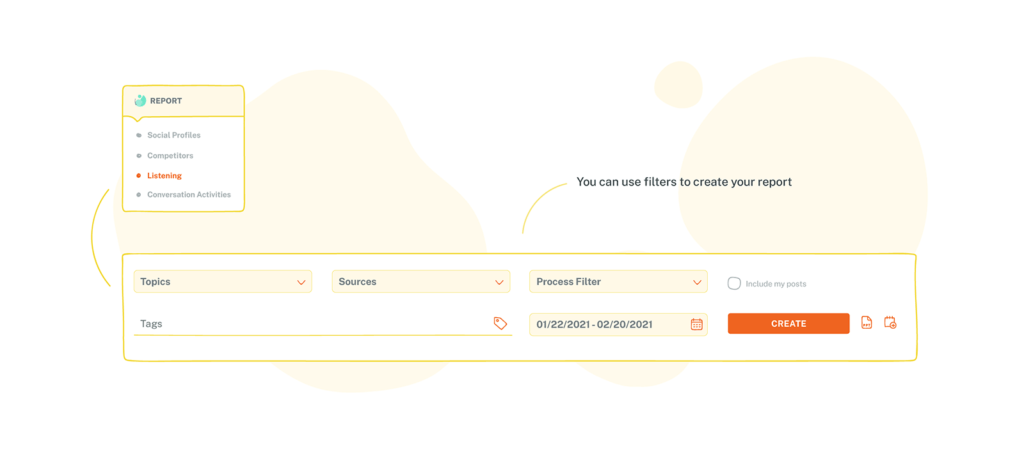
Select the ones that can offer the insight you’re looking for and you’ll be left with neater results made up entirely of the data you need.
How social listening helps your brand
1. Gain in-depth visibility into brand health
Your brand health is complex, with several “vitals” that add up to its overall state.
At a glance, you can get an idea of people’s general feelings about your brand, positive or otherwise.
But if you peer deeper, you’ll find that different elements form that picture.
For example, while your customers may be raving about a new product you’ve just released, they may not be especially fond of your customer service.
Or they may enjoy the creativity and humor behind your social media campaigns, but also desire that you engage with them more.
Taken altogether, these factors give a portrait of your brand health, but you can see the individual elements that are either strengthening or weighing it down.
And that helps you know precisely what to target.
With a side-by-side analysis of social listening reports from different time frames, it’s possible to see how your brand health has been changing, and you can tie the shifts to actions you’ve taken over the two periods.
You’ll be able to see what’s worth repeating and what needs to be tweaked or dropped altogether.
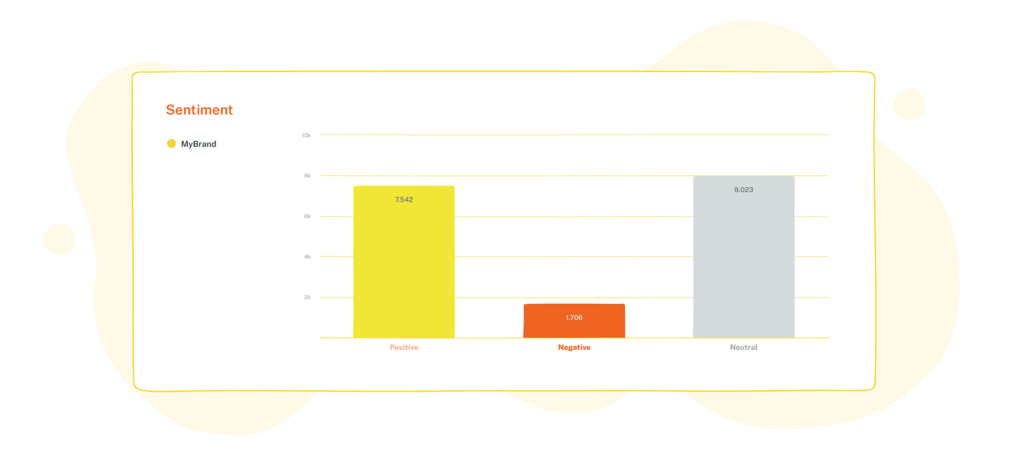
2. Know your audience better
When aiming to gain a more transparent understanding of your audience, it helps to know what they’re saying, even when they’re not trying to get your attention.
Their posts and comments on different channels fill in the gaps you miss when you’re relying on their interactions with you for all your intel.
Also, you can get an idea of other hashtags or brand-related topics that interest them, enabling you to find organic ways to join the conversation for greater reach.
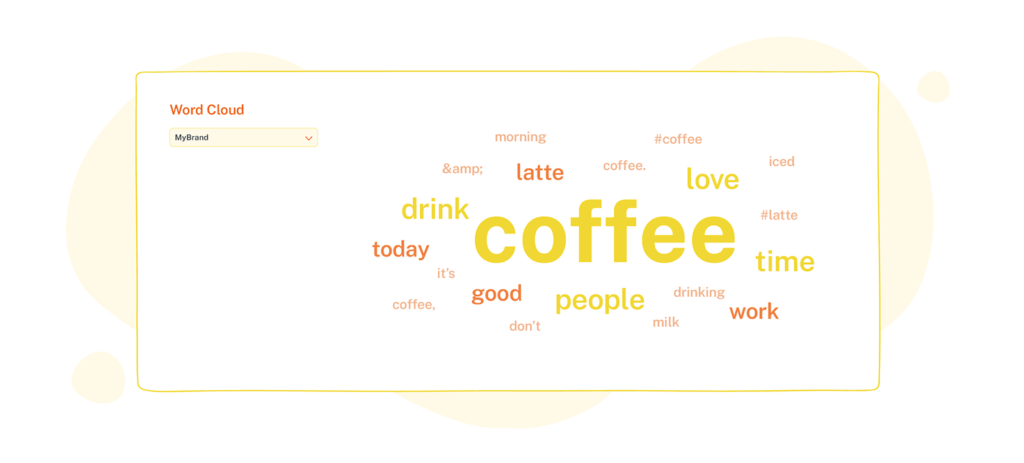
This added knowledge contributes to shaping and evolving your messaging to give it greater resonance, which earns you the rewards of brand growth, more engagement, increased conversions, and a higher success rate with your marketing goals.
3. Refine and carefully time campaigns
Carrying on with brand health: Each campaign’s success heavily depends on the environment in which you launch it.
If brand health is low, an otherwise great campaign may register a poor ROI simply because of your audience not being particularly warm toward your brand.
In such a situation, it may be better to take action aimed at increasing the brand’s likability before launching your campaign.
Similarly, a time when you’re experiencing highly positive audience sentiment may offer a tide that can help lift your marketing campaigns and enable them to score well against your KPIs.
As research from Boston Consulting Group shows, coinciding your campaigns with periods when your audience is most favorable to your brand can boost ROI by 20%.
4. Update ROI projections
You start each social media marketing effort with an expected or estimated ROI, along with KPIs to give you a more detailed picture of its success.
Keeping your finger on the pulse with social listening gives you a real-time and continually updated understanding of whether you’re on track to hit those goals.
If sentiment becomes more positive over the course of the campaign, that will likely bode well for the campaign you currently have underway.
If, on the other hand, it takes a negative turn, that may also have a ripple effect on your ROI.
Paying attention to this information with social listening makes for a more in-depth analysis that helps you boost the accuracy of your projections, which is essential for planning ahead.
✨ Bonus article: How to define and measure social media ROI for your business
5. Manage crises early
Your ability to manage a crisis often comes down to how early you catch wind of it and respond, as the Harvard Business Review explains.
While your followers may wait a while before starting a conversation to alert you, chances are they’ll be talking about it somewhere on the web.
While monitoring alone can help you spot the crisis, social listening gives you an overview of the sentiment that it’s inspiring in your audience. And this helps you realize the appropriate way to address it to minimize the negative impact on your brand.
Social listening strategies
The data you get from social listening can make a more meaningful impact on your brand if you carry it out with helpful strategies in mind.
These can be particularly effective:
Tracking overall brand sentiment and specific product opinions
The general sentiment around your brand is essential since it determines whether your audience goes on to engage with the brand further.
But the depth of data available to you through social listening allows you to narrow down to views about specific products. While sentiments toward the whole brand may be positive, they may be less so toward some of your products or services.
By listening to audience commentary about each product you offer, you can discover those that are attracting negative comments, which may in turn be affecting the entire brand.
Doing this enables you to figure out new viewpoints you can introduce to the discussion to sway audience feelings, and specific customer objections that you need to address.
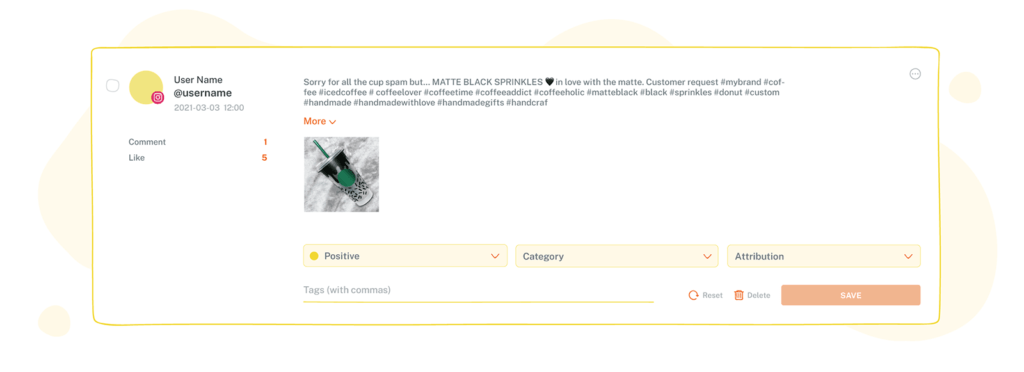
Grouping common complaints, questions and comments
While conducting social listening, you may realize common issues your audience keeps bringing up. Whether they refer to your brand as a whole, to certain products, or to recurring questions, grouping them can help you form a defined strategy for addressing each of them.
For example, if you’re experiencing audience complaints about a particular problem, you can create a template response in the engage module so you’re able to address it quickly.
Discovering industry-wide trends
Social listening isn’t merely about discovering current audience opinions. You can use it to get an idea of where your industry as a whole is headed.
This gives you the chance to plan your social media strategy in advance of changes in your space, as well as modify other aspects of the business to keep pace with shifting customer expectations.
Insights here can be broad, from the content audiences are engaging with to changes in their product preferences.
By listening to how your audience’s desires and tastes are changing, your brand can proactively evolve to avoid having an outdated approach.
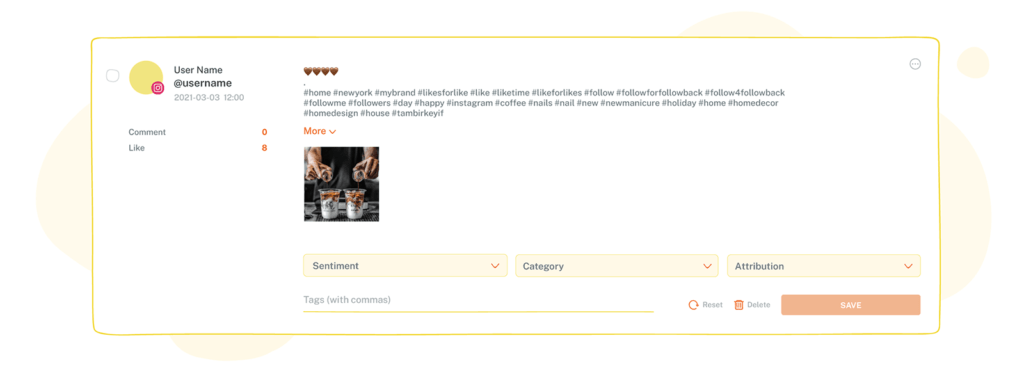
Carrying out competitor analysis
A vital part of social listening is looking over the fence to see what’s going on with competitors.
Listening to the conversation that’s going on around them can help you identify blind spots in your strategy.
If your competitors are generating more buzz, it’s possible to see what they’ve incorporated into their social media strategy to get people talking.
And if the sentiment is generally positive, that’s your chance to identify approaches and topics of conversation that can boost your brand, too.
If it’s negative, take note of why—so you can steer your brand clear of the same pitfalls.
Especially if you’re going through an event or a circumstance that normally causes brand health to drop—such as stockouts and crashes—you can see how competitors manage these situations to minimize their brand impact.
Optimizing social listening results with the Sociality.io Listening Module
Once you know the social listening topics that can give you the best info, there’s more you can do to get even greater value from them.
1. Comprehensive keywords
While you can choose to monitor a single keyword at a time, you’ll likely get deeper and more revealing insights if you opt for a combination.
If you use the “OR” command with a keyword pairing, you get separate mentions with either of the keywords.
With the “AND” command, you see mentions that contain both keywords within the same post.
This helps you zero in on the exact topics that you’re interested in knowing more about.
2. Advanced filtering
Beyond sources, time frame, and process, there are more filters you can use to sieve the results even further.
You can exclude certain keywords that you think may contaminate the data, and you can do the same for posts from your account.
Plus, for Twitter, you can set the results to show retweets to get a better idea of where the conversation is leading. Likewise, you can toggle “search on location,” allowing you to see tweets and replies from people in the same area as your business.
3. Scheduled reports
Instead of manually generating reports each time you want to carry out social listening, you have the option to have the reports automatically emailed to you at a frequency of your choice: daily, weekly, monthly, or quarterly.
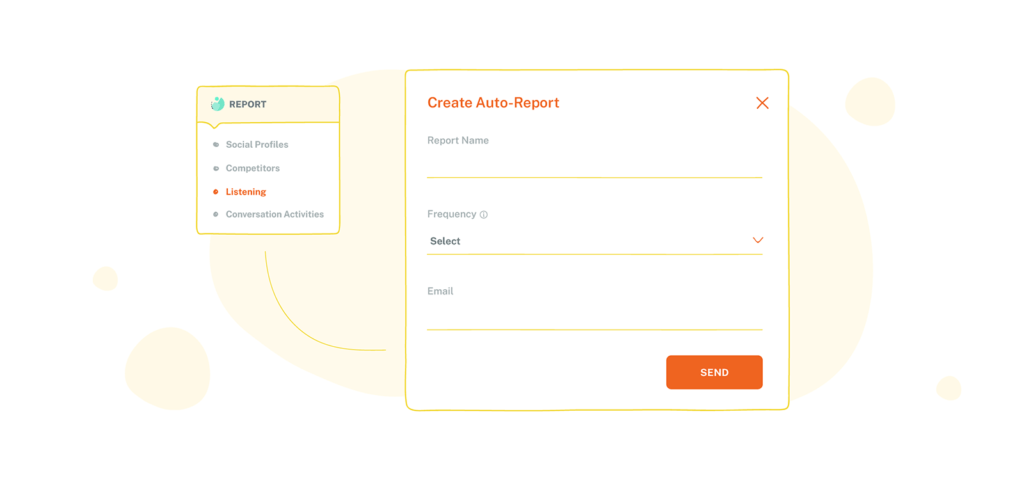
4. Customized categories and attributions
How do you want to group your mentions?
With the Sociality.io Listen module, that’s entirely up to you and the needs of your brand.
If you’re running the social media accounts of a clothing brand, it makes sense to set your categories to “shirts,” “shoes,” “delivery” or anything else your audience is likely to bring up when they mention you.
For a coffee shop, categories such as “service,” “taste” and some of the brews they serve may be good options.
And you can also customize attributions to match the type of mentions you’ll be looking to track, which, for example, may be questions, complaints, or compliments.
5. Assigning conversations
If you discover a conversation that you think you need to respond to or one that you feel should get some attention, you can assign it to a member of your team.
This helps you to take part in social listening collaboratively, with the ability to give different members of your team posts to reply to or simply analyze and draw insights that can shed greater light on your audience’s desires and expectations.
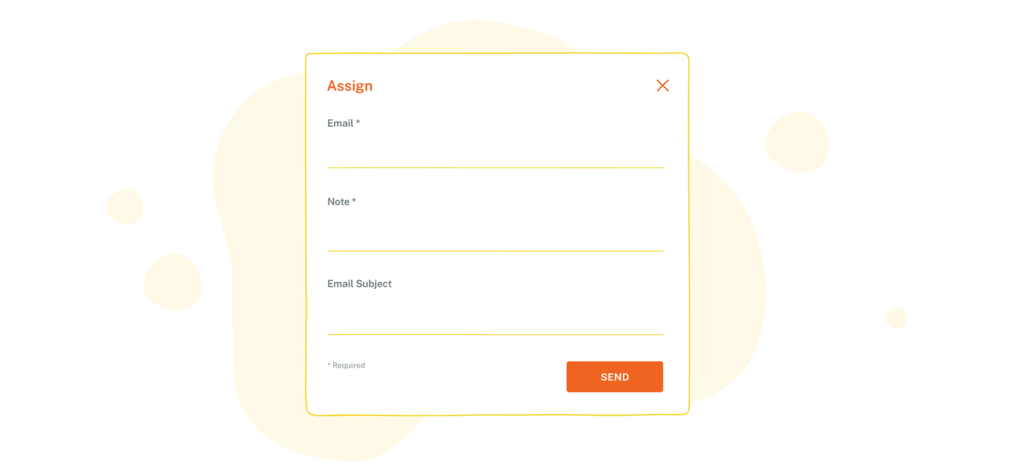
To Conclude…
Social listening is a powerful tool to have in your social media marketing arsenal.
The real-time info on your brand health can help you act quickly to win back your audience’s favor, topics that focus on competitors expose ideas that can be beneficial for your brand, and industry-wide insights reveal ways to appeal to your audience more strongly.
If you haven’t been tapping into the benefits of social listening, it’s high time! Metadata: Stay informed about your brand health and your audience’s thoughts and feelings with social listening, with data sources from different platforms and the web.
Discover more ✨ Top 10 social media listening tools


